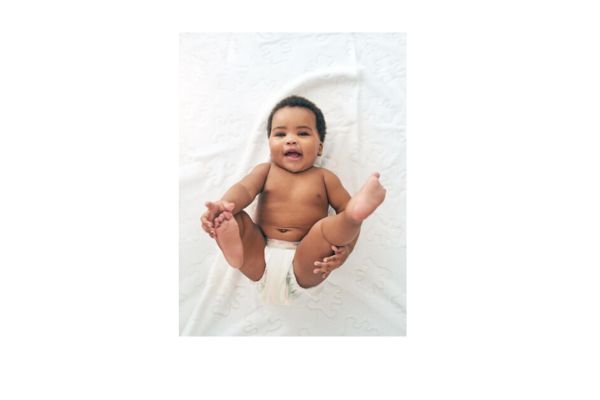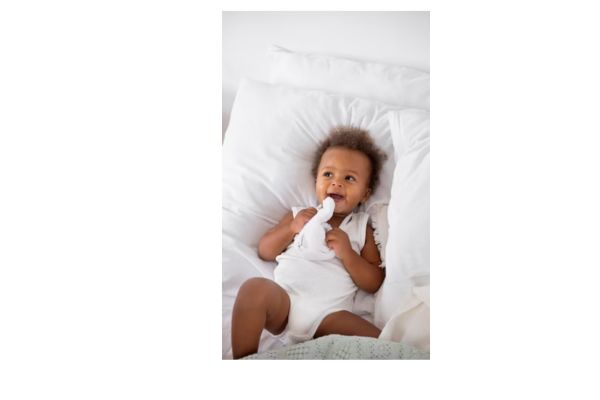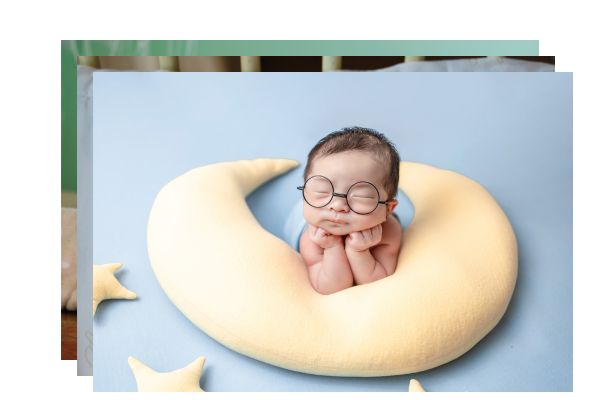10 Ways to maintain proper diaper hygiene for newborn baby: The newborn brings great joy and responsibility, Among the many duties new parents experience, maintaining good nappy hygiene is essential to the infant’s comfort and well-being. Newborns have sensitive skin that can become irritated and infected if not properly cared for. It becomes crucial to learn how to maintain good nappy hygiene.
Here are some vital pointers to help parents and other carers navigate the complex world of changing a newborn’s diaper. Every suggestion is carefully prepared to equip parents and carers with the knowledge they need to keep their little ones clean, happy, and healthy—from choosing the right diapers to adopting proper cleansing procedures. Together, let’s set out to protect our newborns’ health by adhering to strict nappy hygiene guidelines.

Importance of Diaper Hygiene for Newborns
For the sake of the health and comfort of newborns, nappy hygiene must be followed. Maintaining clean and dry diapers is important for parents because it avoids the different skin irritations, infections, and discomforts that can result from improper diaper care. Due to their fragile and sensitive skin, newborns are especially vulnerable to problems with their diapers. Thus, it’s crucial to continue practicing proper nappy hygiene to support their general growth and well-being. To ensure the health and pleasure of newborns from the beginning,
Diaper hygiene for newborns is of paramount importance due to several key factors
Sensitive Skin: Compared to older children and adults, newborns have extremely sensitive, delicate skin that is more prone to infections, rashes, and irritation. Maintaining good nappy hygiene reduces the possibility of discomfort and skin problems.
Preventing Infections: Extended contact with urine and faeces in unclean diapers fosters the growth of bacteria and fungi, raising the risk of diaper rash, urinary tract infections, and other illnesses in the diaper area.
Preventing Complications: Ignoring diaper hygiene can result in serious skin breakdown, infections, and severe diaper rash, which can be quite distressing for the infant and carers and necessitate medical attention.
Bonding and Interaction: Positive connections and bonding are fostered when carers and neonates maintain good nappy hygiene. Frequent nappy changes improve the parent-child attachment by offering chances for physical intimacy, caring, and bonding.
Comfort and Well-Being: A newborn’s general comfort and well-being are influenced by having clean and dry diapers. Diapers that are too wet or dirty can be uncomfortable for the infant, which can impede his or her development and cause fussiness, irritability, and sleep patterns that are disrupted.

Things to Consider When Choosing Newborn Diapers
When selecting newborn diapers, it’s important to consider aspects such as the baby’s comfort and hygiene.
Size: Diapers for newborns are available in a range of sizes, usually starting at size 0 or preemie. Based on the baby’s weight and development, it is essential to select the appropriate size to provide a snug fit that stops leaks and discomfort.
Material: Choose cloth diapers or those made of hypoallergenic or soft, breathable cotton. Steer clear of diapers with latex, strong chemicals, or scents since these may hurt the infant’s delicate skin.
Diaper Type: Choose whether you prefer disposable or cloth diapers. Disposable diapers provide convenience and are ideal for travel, but cloth diapers are reusable and environmentally friendly. Select the option that best matches your lifestyle and tastes.
Reviews and suggestions: Before making a purchase, read reviews and get suggestions from other parents or healthcare professionals. Their knowledge and experiences can help you make an informed decision regarding which diapers are best for your newborn baby.
Absorbency: Choose diapers with high absorbency to keep the baby’s skin dry and limit the chance of diaper rash. High-quality diapers with innovative absorbent technology may efficiently seal in moisture and prevent leaks, keeping the baby comfortable for extended periods of time between changes.
Sensitivity: When selecting diapers, take the baby’s skin sensitivity into account. Certain materials or chemicals included in diapers may cause allergic responses in certain newborns. To reduce irritation and allergic reactions, choose diapers that are labelled as hypoallergenic or made for sensitive skin.
Fit: Make sure the diapers are comfortably snug around the baby’s waist and legs, without being excessively tight or baggy. Both leak prevention and the baby’s comfort depend on a suitable fit.
10 Ways to Maintain Proper Diaper Hygiene for Newborn Baby
For your newborn baby’s comfort and well-being, it’s critical to practice good nappy hygiene. It’s critical to adhere to recommended diapering techniques for newborns due to their sensitive skin, which is more prone to discomfort and illness. Ten vital suggestions to keep your infant clean and comfortable are included here, ranging from selecting the appropriate diapers to developing a hygienic changing schedule.
Pick the Correct Diapers: Choosing diapers appropriate for babies is the first step in maintaining good diaper hygiene. To prevent irritation and pain on the skin, take into account variables including size, substance, absorbency, and sensitivity.
Change Diapers Frequently: To maintain your baby’s skin dry and healthy, make changing diapers a regular ritual. To avoid diaper rash and discomfort, newborns may need to have their diapers changed as frequently as every two to three hours.
Correct Diaper Changing Technique: Change diapers in a hygienic manner, making sure to clean the baby’s skin thoroughly and gently after each change. Make sure to clean all of the folds and wrinkles to avoid the accumulation of moisture and bacteria.
Use Diaper Rash Cream Proactively: Use diaper rash cream ahead of time to shield your baby’s skin from discomfort and irritation, particularly when there are extended intervals between changes or as soon as your baby shows symptoms of redness or irritation.
Cleanse Gently During Changes: To avoid using strong soaps or wipes that could irritate your baby’s skin even more, use warm water, a soft cloth, or light wipes. Instead of rubbing, pat the skin dry to reduce friction.
Be Aware of Any Symptoms of Pain or Infection: Keep an eye out for any indications of pain or infection related to diapers in your infant, such as redness, irritation, or an odd smell. See your pediatrician if you observe any signs that seem off.
Use Proper Technique for Disposing of old Diapers: To avoid contamination and odors, dispose of old diapers in a hygienic manner. Before discarding them in a diaper pail with a tight cover, wrap them firmly or seal them in disposable diaper bags.
Keep Your Diaper Changing Area Clean: Set up a tidy and orderly changing station with all the necessities (diapers, wipes and diaper rash cream) easily accessible. Sanitize the changing area frequently to stop the spread of bacteria.
Correct Way to Wash Cloth Diapers: If you use cloth diapers, wash and sanitize them according to the manufacturer’s recommendations. To maintain absorbency, choose a detergent that is safe for your baby’s delicate skin and stay away from fabric softeners.
Monitor and Modify: Evaluate your diapering schedule on a regular basis, taking into account your baby’s demands as well as any modifications to their skin or overall health. Keep an eye out for any indications of nappy rash or irritation, and act quickly to treat them.

Understanding Diaper Rash and its Causes
A common skin irritant that many newborns experience is nappy rash. It usually shows up as red, swollen areas on the baby’s buttocks or vagina and might hurt or cause discomfort. In order to prevent diaper rash and to make sure your newborn is using clean diapers, it is essential to understand its causes.
Moisture: Extended contact with urine or stool moisture can erode the skin’s natural barrier of protection, leaving it more prone to irritation and inflammation.
Friction: When a baby’s diaper rubs against their sensitive skin, it can generate friction that worsens irritation and can eventually result in diaper rash.
Irritants: Substances present in urine and stool, as well as chemicals found in some disposable diapers, wipes, or detergents, can irritate the skin and exacerbate diaper rash.
Yeast or bacterial overgrowth: Fungal or bacterial infections can develop in the warm, moist environment of a diaper, leading to diaper rash.
Applying diaper rash cream as a preventive measure
Preventatively using nappy rash cream can help shield your baby’s sensitive skin from irritation and pain. The following is an excellent way to apply nappy rash cream:
Pick the Correct Diaper Rash Cream: Look for a diaper rash cream that is especially made for infants, ideally with zinc oxide or other skin-protecting ingredients.
Apply a Thin coating: After cleaning and drying the infant’s skin, apply a thin coating of diaper rash cream, paying special attention to wrinkles, the buttocks and the genitalia. This should be done before changing the baby’s diaper.
Reapply as Necessary: Reapply diaper rash cream every time the baby changes diapers, particularly if the infant displays red or irritated skin. Frequent application creates a barrier of defense that keeps irritants and moisture from penetrating the skin.
Use of Diaper Rash Cream During Extended Diaper Use: When there is a greater chance of moisture buildup and friction, diaper rash cream is especially helpful during nighttime or prolonged diaper use. It offers an additional layer of defense to maintain the baby’s skin healthy and free of rashes.
See Your Pediatrician: If, in spite of precautions, your child continues to experience severe or persistent nappy rash, get in touch with your pediatrician. In addition to ruling out underlying illnesses like yeast infections or allergic responses, they can offer appropriate treatment recommendations.
Newborns may have discomfort or infection from their diapers, which should be treated right once to avoid worsening the situation. Early detection of the symptoms enables parents to take the appropriate action to resolve the problem and guarantee the comfort and wellbeing of their infant. Here are some typical indicators to look out for:
Redness: Although some redness in the diaper area is natural, persistent or increasing redness may be a sign of inflammation or irritation. Keep an eye on the degree and intensity of redness, particularly if it extends past the diaper area.
Skin irritation: Watch out for symptoms like itching, scratching, or rubbing the area around the nappy. Changes of diapers or wearing an unclean diaper can make babies unhappy or uncomfortable.
Rash: Diaper rash appears as red, swollen skin patches, occasionally accompanied by blisters or elevated lumps. The rash can range in severity from mild to severe and can be localized or spread throughout the diaper area.
Skin Chafing or Rawness: Continuous friction between the diaper and the baby’s skin can lead to chafing or rawness, particularly in areas where the diaper rubs against the skin, such as the thighs, buttocks, and genital area.
Persistent Crying or Fussiness: If your baby seems unusually fussy or cries during diaper changes or shortly afterward, it could be a sign of discomfort or irritation caused by a wet or soiled diaper, tight fit, or underlying skin issue.
Modifications in Skin Texture: Take note of any variations in your baby’s skin’s texture in the diaper area. Roughness, peeling, or the appearance of tiny lumps or blisters could be signs of an infection or allergic reaction.
Unusual Odor: Although some odor is typical when changing diapers, an exceptionally strong or unpleasant odor coming from the diaper area could be a sign of an illness, especially a yeast infection, which can smell quite sour.

Conclusion
Maintaining proper diaper hygiene for your newborn baby is crucial for their comfort, health, and well-being. By following the ten essential tips outlined in this article, parents can create a hygienic environment that minimizes the risk of diaper-related issues such as irritation, rash, and infection. From choosing the right diapers to practicing regular diaper changes, applying preventive measures like diaper rash cream, and promptly addressing signs of discomfort or infection, parents play a vital role in ensuring their baby’s diaper area remains clean and healthy. By prioritizing proper diaper hygiene, parents can provide their newborns with the care and attention they need to thrive, allowing them to enjoy each precious moment of their early days with comfort and ease.